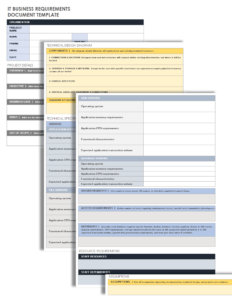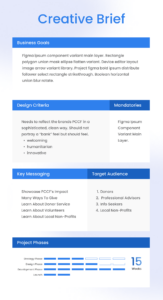In the world of web development, it’s essential to have a clear understanding of the website technical requirements before starting any project. A website technical requirements template provides a structured framework to document and communicate these requirements, ensuring that all stakeholders are aligned and that the final product meets the intended goals.
By using a website technical requirements template, you can streamline the process of outlining the technical specifications of your website. It helps you define the functional, performance, and security aspects of your website, making it easier for developers to understand and implement your vision effectively.
Functional Requirements
The functional requirements of a website define how it will operate and what features it will offer to users. These requirements outline the specific tasks that the website should be able to perform, such as allowing users to create accounts, submit orders, or access content. When defining functional requirements, consider:
- User stories: Describe the user’s goals and how the website should help them achieve them.
- Use cases: Outline the specific scenarios and workflows that the website should support.
- Interface requirements: Specify the user interface (UI) elements, buttons, and navigation menus.
- Data requirements: Determine the types of data that the website will need to store and process.
Thoroughly detailing these functional requirements ensures that the website meets the users’ needs and provides a seamless and intuitive user experience.
Performance Requirements
Website performance requirements define the speed, responsiveness, and scalability of your website. These requirements are crucial for ensuring a positive user experience, especially for e-commerce websites or those with high traffic volumes. When defining performance requirements, consider:
- Load time: Specify the maximum acceptable time it takes for pages to load.
- Response time: Define the target response time for user interactions, such as button clicks or form submissions.
- Scalability: Determine the website’s ability to handle increased traffic without compromising performance.
- Device compatibility: Ensure the website performs well on different devices, including desktops, laptops, tablets, and smartphones.
By defining clear performance requirements, you can ensure that your website delivers a fast and reliable user experience, reducing bounce rates and increasing conversions.
Conclusion
A website technical requirements template is an invaluable tool for ensuring that your website meets your specific needs and goals. By using a template, you can clearly and comprehensively outline the functional, performance, and security requirements of your website. This will help developers understand your vision and create a website that is both effective and efficient.
Remember, the success of your website project hinges on the clarity and precision of your website technical requirements. By investing time in crafting a detailed and well-structured template, you lay the foundation for a successful and rewarding web development experience.

